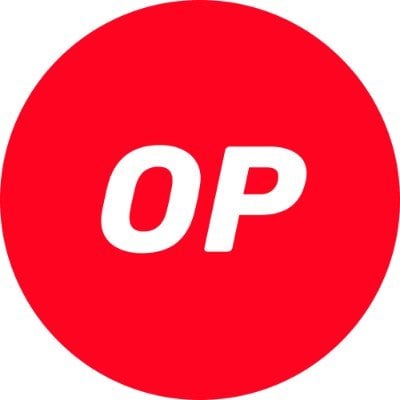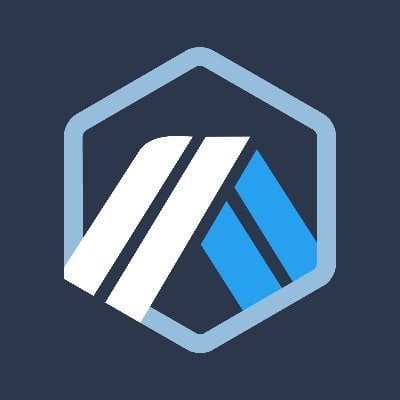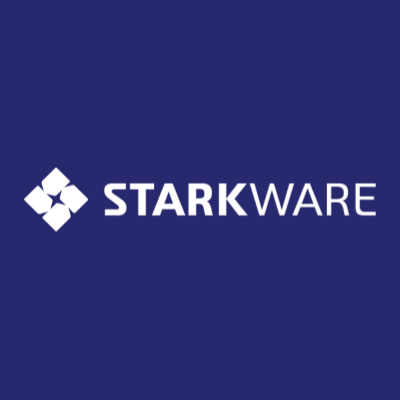Binance Research Report: Key Players and Development Trends in the Layer 2 Sector
Author: BinanceResearch
Compiled by: Shenchao TechFlow
The L2 ecosystem has made significant progress in enhancing the scalability, efficiency, and usability of the industry.
Recently, L2 has seen a surge of competitors, and market competition has become increasingly fierce.
Almost all chains claim to have low costs and high efficiency, and there is a trend among various players to modularize, increase scalability, and build L3.
What kind of L2 do we need? What are the characteristics of the various players in the current L2 race, and what actions are underway? Furthermore, what new trends will L2 evolve into in the future?
Binance Research previously released a research report titled "The L2 Evolution," which provides detailed answers and insights into the above questions. The report focuses on analyzing the complexity of different L2 approaches, assessing their current positions in the market, and exploring potential new directions that may arise in the current L2 market landscape.
Given the length of the report, Shenchao has interpreted and organized it to help everyone quickly and systematically understand the situation of various players in the L2 market and make predictions about future opportunities.
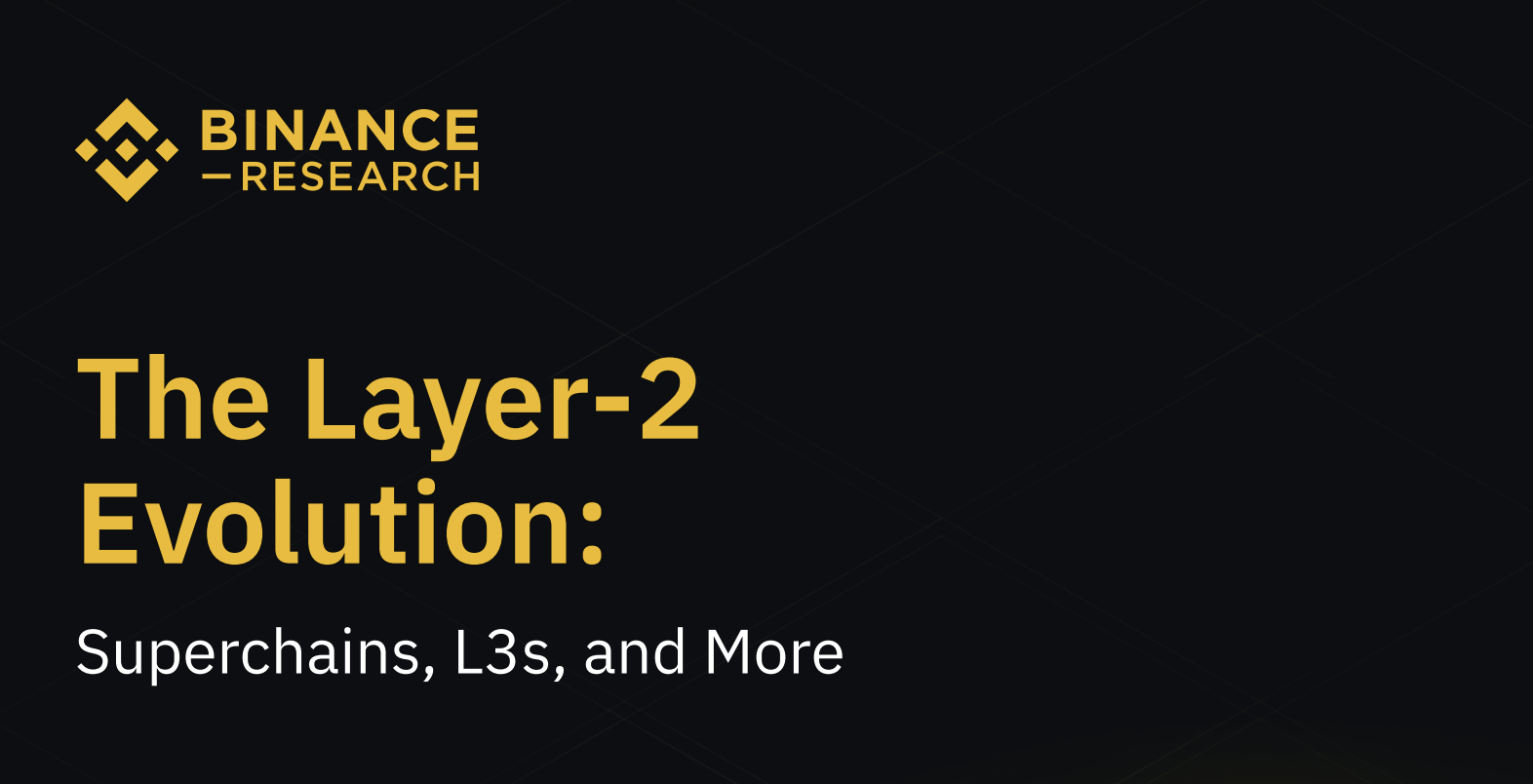
Key Takeaways:
- L2 has evolved new trends, including Superchain, L3, and Hyperchain. These advancements are being adopted by various L2s and are expected to become the cornerstone of the next generation of Ethereum scaling, simplifying development processes, enhancing security, and establishing greater interoperability within the ecosystem.
- Optimism's OP Stack is moving towards a superchain with high interoperability, and the Bedrock upgrade represents a preliminary step towards realizing their vision.
- Arbitrum is also at the forefront of Ethereum scaling, developing L3 networks through Arbitrum Orbit, providing a permissionless framework for deploying custom chains on Arbitrum L2.
- zkSync has proposed Hyperchain, a set of customizable trustless linked blockchains that achieve super scalability, improved composability, and enhanced security.
- StarkWare is developing a multi-layer solution, exploring L3 for custom scaling while leveraging L2 for general scaling.
- Polygon 2.0 aims to create a "value layer of the internet" by unifying its L2 solution suite, which includes Polygon PoS, Supernets, and zkEVM.
Market Background
- Scalability is the core challenge currently faced by Ethereum, which struggles to reach a scale comparable to the internet.
- Current L2 solutions also have limitations and cannot be the best choice for applications. They either sacrifice scalability or increase the risk of dependency on specific ecosystems.
- Cross-chain interoperability remains a pain point. Existing cross-chain bridges are fragile and often attacked.
- The next stage of L2 development is to simplify the deployment process of Rollups and lower the barriers for developers. The goal is to achieve "one-click" deployment of Rollup chains, as simple as creating a webpage.
- Each Rollup chain currently needs to build its own infrastructure, leading to resource wastage and high fragmentation. New Rollup models can achieve shared infrastructure and interoperability, reducing resource redundancy.
- New cases include OP Chains, Arbitrum Orbit, and hyperchains on zkSync.
Key Player 1: Optimism and OP Stack
- Optimism is the team behind OP Mainnet, which is an EVM-compatible optimistic rollup that launched in December 2021 and is one of the leading Ethereum L2 solutions. As of June, OP Mainnet's total locked value exceeded $2.2 billion, holding the second-largest market cap among all Ethereum L2 solutions, with a total market share of over 23%.
- In October 2022, Optimism launched OP Stack, described as a "modular open-source blueprint for highly scalable and interoperable blockchains." This marks the evolution of Optimism's design and vision in the Ethereum scalability space, beyond just running their optimistic rollup solution.
- OP Stack introduces the concept of a so-called "Hyperchain," referring to a highly integrated and unified L2 blockchain network built on OP Stack.
- The latest development in this new phase for Optimism is the migration of their flagship L2 rollup to Bedrock, the first official version of OP Stack, bringing numerous operational and user improvements to their product.

OP Stack Explained
- OP Stack is a standardized, shared, and open-source development stack that powers OP Mainnet. It consists of various software components that make up the Optimism L2 rollup and can be used to create a collection of L2 blockchains that are shared, interoperable, and coordinated.
Essentially, OP Stack aims to simplify the creation of L2 blockchains and can be seen as a "supermarket for building L2."

- Key components include:
- Data Availability Layer: This layer defines where the raw inputs of the OP Stack chain are published. Most OP Stack modules use the Ethereum data availability layer, which is the module used by the OP Mainnet rollup.
- Sorting Layer: This layer determines how transactions on the OP Stack chain are collected and published to the data availability layer. Currently, the sorting module of OP Stack is a single sorter setup. Proposed future modifications will include multiple sorters to enhance the platform's decentralization.
- Derivation Layer: This layer defines how raw data from the data availability layer is processed to form inputs sent to the execution layer. It is closely related to the data availability layer, as it must understand how to parse the raw data from there.
- Execution Layer: This layer defines the state within the OP Stack chain and how the state changes upon receiving inputs from the derivation layer. The execution layer module currently used in OP Stack is a slightly modified version of the EVM.
- Settlement Layer: This layer traditionally handles retrieving assets from the blockchain, first proving the state of the target blockchain and then processing the retrieval based on that state. More broadly, for OP Stack, the settlement layer allows third-party blockchains to be aware of and establish a view of the OP Stack chain's state.
- Governance Layer: This refers to the general set of tools and processes used for managing upgrades, design decisions, and system configurations. Compared to other layers, this is a more abstract layer that can include a variety of mechanisms.
- Benefits of OP Stack:
- Scalability: The code of OP Stack is designed for other builders who may want to use and build upon it. Therefore, their code is open-source and generally modular.
- Simplicity: They strive to make their code as simple as possible and tend to reuse battle-tested existing code.
- Understandability: Existing Ethereum developers can relatively easily build on OP Stack.
- Client Diversity: Multiple client implementations can be achieved across OP Stack.
Benefits of the Bedrock Upgrade
- Lower Fees: Bedrock implements optimized data compression strategies to minimize data costs. The average fee per transaction has now decreased by over 77%. This also makes Optimism's L2 rollup the cheapest Ethereum L2 currently available.
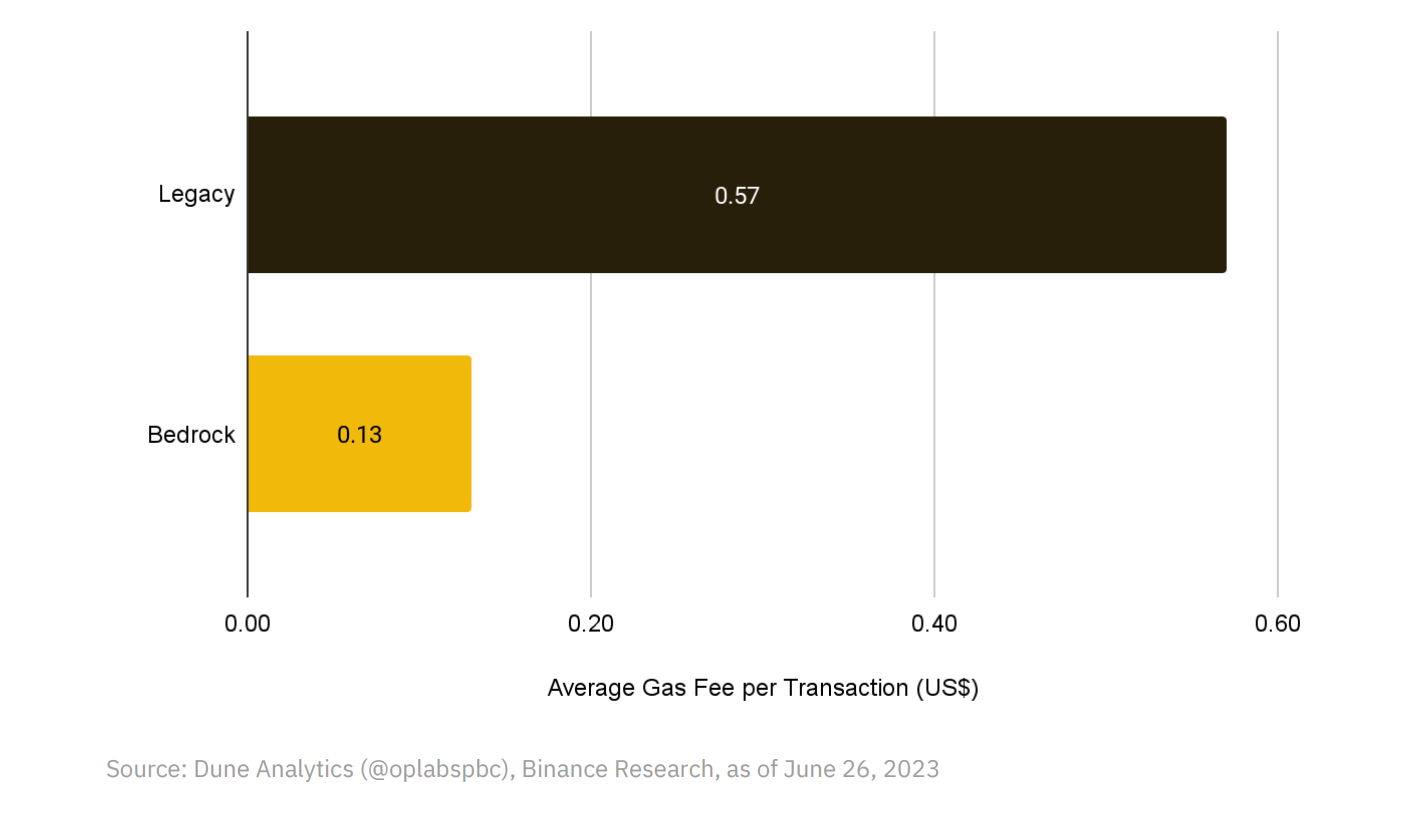
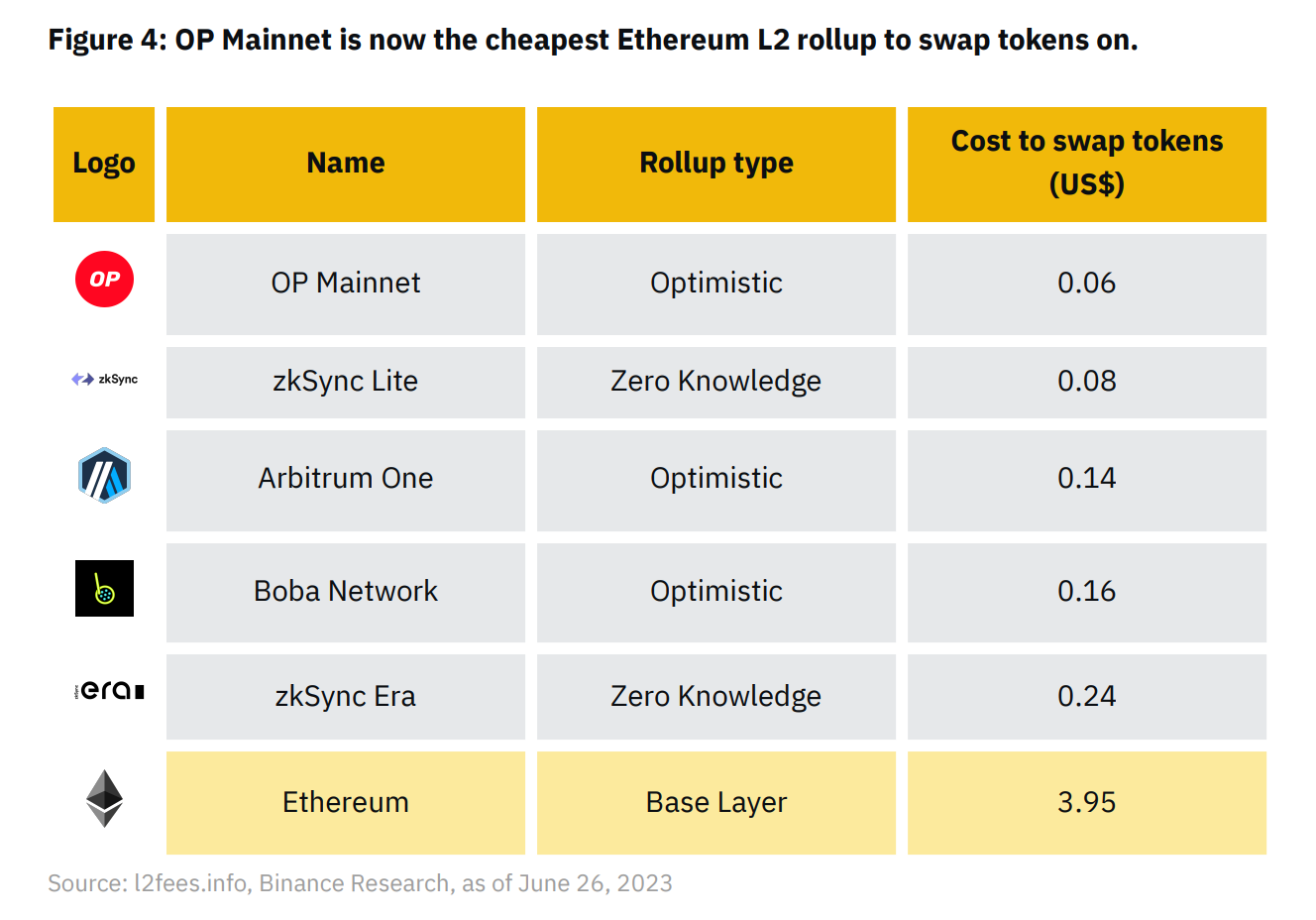
- Improved User Experience: This is an enhancement to the user experience, especially for those who are less familiar with or have limited experience with L2 rollups.
- Improved Proof Module: Bedrock abstracts the proof system from OP Stack (for the settlement layer in Figure 2), allowing OP Stack chains to use fault proofs or validity proofs (i.e., ZK-proof) for transaction validation. Notably, there is already an RFP to establish a ZK validity prover for OP Stack.
- Improved Node Performance: Bedrock allows multiple transactions to be executed in a single rollup "block," rather than the previous "one transaction per block" model. Under current transaction volumes, this will reduce state growth by approximately 15GB/year.
- Summary: OP Stack helps break down the various components needed to build L2 chains, with Bedrock being the first implementation of this software. Key term: modularization.
OP's Superchain Architecture
- After the Bedrock upgrade, Optimism's next step is to begin upgrading itself to a Superchain.
- Superchain is envisioned as a decentralized network of L2 chains (referred to as OP Chains) that share security, a communication layer, and an open-source technology stack (i.e., OP Stack).
- These chains will be standardized, designed to be used as interchangeable resources. This standardization will enable developers to create applications targeting the Superchain as a whole, rather than just the underlying chains on which the applications run.
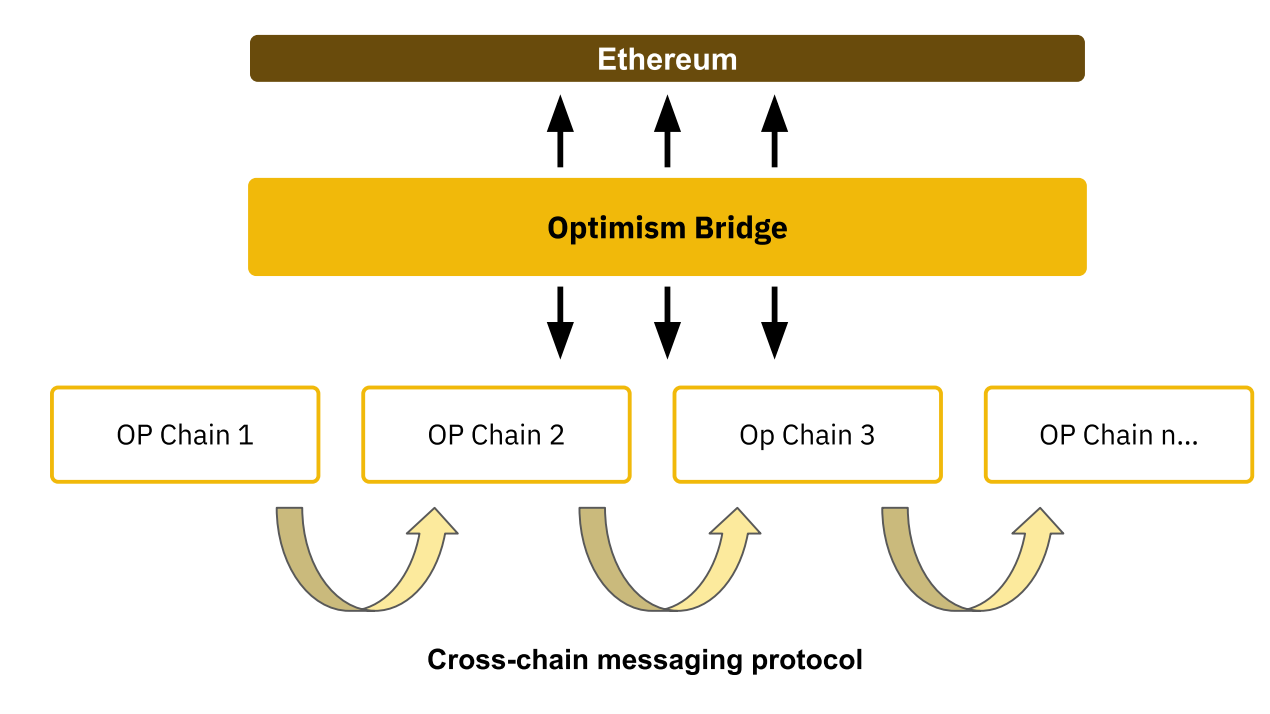
- Benefits of Superchain:
- Reinforced and Secure Codebase: As the number of chains grows, each chain shares and contributes to the modular and standardized codebase that supports them, thereby reinforcing the system.
- Atomic Cross-Chain Composability: Different OP chains can seamlessly transact simultaneously without the need for bridging or intermediaries.
- Universal Ethereum Infrastructure: Allows existing Ethereum developers to seamlessly switch to building OP chains.
- Projects joining OP:
- Optimism's L2 rollup chain, after the Bedrock upgrade, is the first member of the Superchain.
- Coinbase's Base L2 will be the second member, launching its mainnet this year.
- Worldcoin has also committed to building on OP Stack.
- Conduit aims to make it easier for developers to launch their own OP Stack rollups, ultimately becoming part of the Superchain.
- Aevo, a decentralized options exchange, recently partnered with Conduit to launch its rollup based on OP Stack, with Conduit operating the Aevo rollup sequencer.
- BNB Chain has also announced the op BNB testnet, which is their EVM-compatible L2 chain based on OP Stack.
- In the NFT world, the decentralized NFT marketplace Zora recently launched Zora Network, an L2 based on OP Stack, aimed at making NFTs cheaper and more accessible. Their documentation states that the cost of minting on Zora can be under $0.50, with transactions confirmed in seconds.
Key Player 2: Arbitrum Orbit
Since its launch in August 2021, Arbitrum has become the largest and most prominent L2 network, with a total locked value exceeding $5.9 billion, accounting for over 60% of the total market share.
Arbitrum Ecosystem Products:
- Arbitrum One: The first and core mainnet rollup of the Arbitrum ecosystem.
- Arbitrum Nova: This is Arbitrum's second mainnet rollup, aimed at projects that are cost-sensitive and require high transaction volumes.
- Arbitrum Nitro: This is the technical software stack that supports Arbitrum L2, enabling rollups to be faster, cheaper, and more EVM-compatible.
- Arbitrum Orbit: A development framework for creating and deploying L3 on top of the Arbitrum mainnet.

What is Layer-3?
- L3 networks, sometimes referred to as application chains, are dedicated networks built on top of L2, each hosting smart contracts that support specific decentralized applications.
- The simplest way to understand L3 is to think of them as rollups of L2. They settle with L2 rather than on L1.
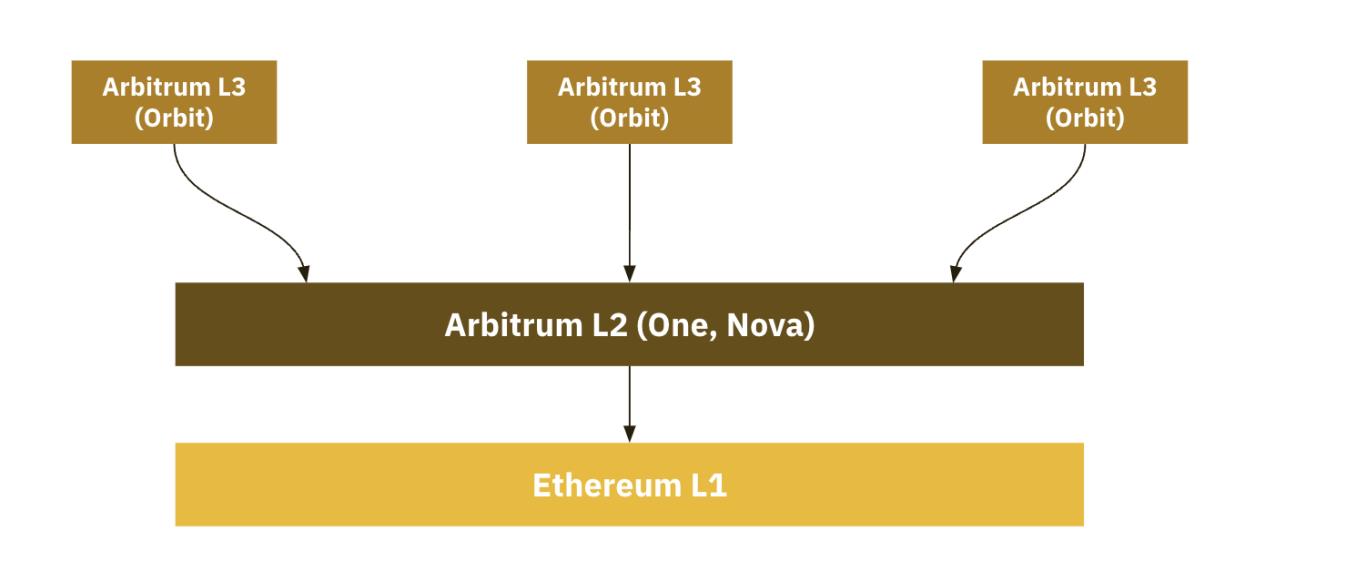
Use Cases for Arbitrum Orbit
- Orbit is a permissionless development framework that allows anyone to deploy L3 chains on top of the Arbitrum L2 chain.
- Through Orbit, Arbitrum intends to support protocols for launching their own L3 chains:
- Layer 3 Rollup: Launching L3 rollup chains similar to Arbitrum One.
- Layer 3 AnyTrust: Launching L3 AnyTrust chains similar to Arbitrum Nova.
- Custom Layer 3: Deploying custom L3 chains on Arbitrum L2 based on Arbitrum Nitro tailored to specific application needs. This includes components like privacy, permissions, fee tokens, governance, etc.
- Summary: Through this solution, Arbitrum aims to attract developers who seek more control and customization, allowing them to fork and freely modify the Arbitrum source code according to their specific requirements. They can even brand their solutions as "custom chains."
Key Player 3: zkSync and Hyperscaling
- zkSync Era, the zkEVM rollup version from Matter Labs, has become one of the most widely used L2 and zkEVM solutions since its deployment on the mainnet, with over $625 million in TVL.
- Super scalability has become its ultimate ambition: managing an unlimited number of transactions without compromising security or decentralization.
- To meet the growing demands of Web3, zkSync has designed its ultimate solution around the concept of Hyperchain.
- The zkSync architecture is intended to integrate Hyperchain networks, all anchored on a basechain.
Hyperchain
- Hyperchain zkSync's vision for L3 is envisioned as a broad ecosystem of trustless and customizable linked blockchains.
- It adopts a modular approach in implementation, providing developers with a Hyperchain software development kit ("SDK") framework that allows them to choose various components for their blockchains or develop their own components.
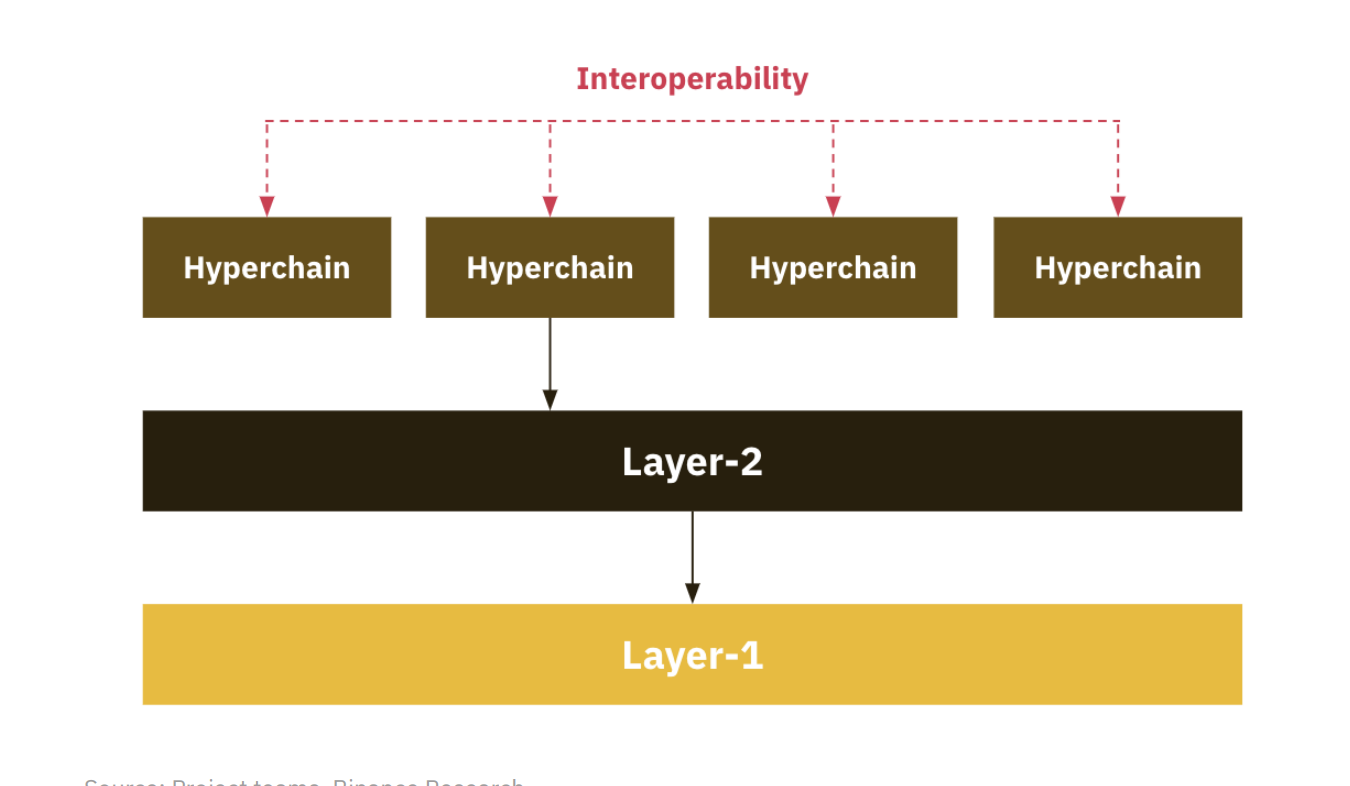
Benefits:
- Security: Hyperchain will overcome typical vulnerabilities associated with non-native bridging, which often lead to hacks. In zkSync's L3, interactions between fractal Hyperchains will occur through native bridges, further enhancing security.
- Performance: The implementation of Hyperchain architecture and super scalability improves the performance of L3.
- Cost: Data costs are significantly reduced due to data availability solutions.
- Usability: zkSync anticipates significant enhancements to the SDK, including the introduction of low-code and no-code solutions, making application development simpler.
- Composability: The system's LLVM compiler supports Solidity and any other modern programming language, increasing accessibility for developers who specialize in languages like Rust, C++, and Swift.
Hyperscaling Theory
- A super scalable blockchain system involves multiple different ZK chains (or superchains) running in parallel, with block proofs aggregated and settled on L1. Theoretically, this could even involve an infinite number of superchains representing the entire system.
- The entire process relates to a concept introduced by StarkWare known as fractal scaling. Fractal scaling is based on a multi-layer network concept where application-specific L3s are recursively built on L2.
- Super scaling further advances this by introducing super bridges, which are native bridges that connect each L3 application chain. This allows transfers between superchains to occur without consuming resources on a third chain, further ensuring that the basechain does not become a central scalability bottleneck, thereby maintaining the principle of parallel super scalability.
As illustrated, without super bridges, fractal scaling could lead to the basechain becoming the primary intersection for most transfers over time, potentially becoming a scalability bottleneck.
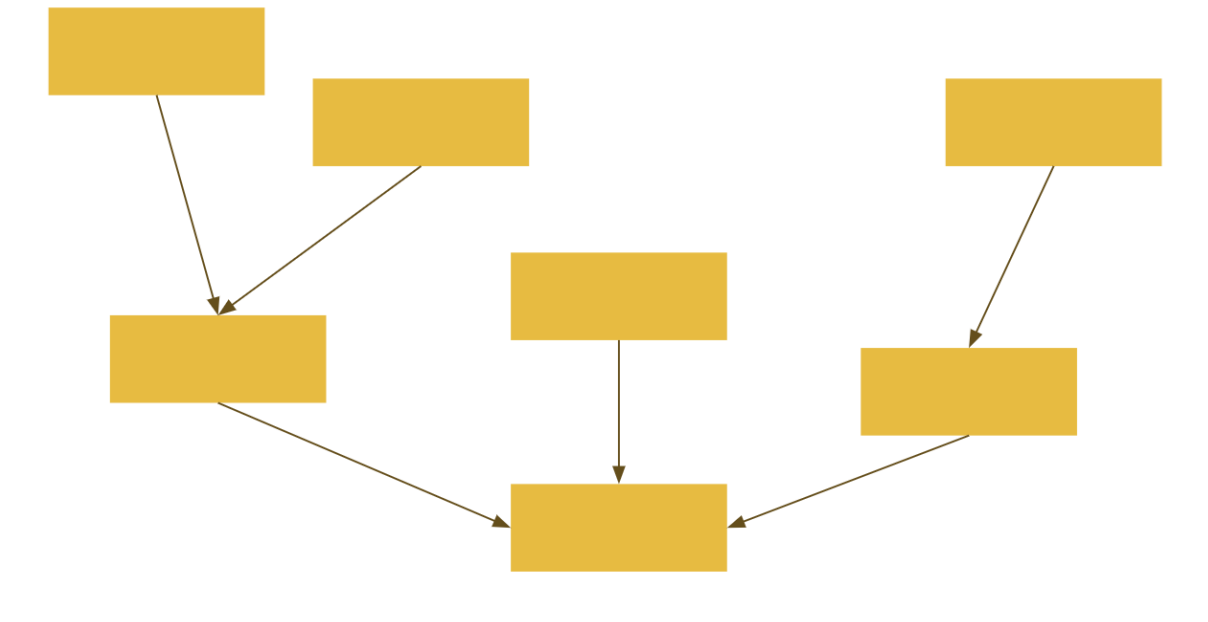
With super bridges, transfers from one superchain to another become as simple and cost-effective as any conventional transfer, reflecting how hyperlinks allow seamless navigation from one webpage to another with just a click, eliminating the need for additional navigation through each layer.

Key Player 4: StarkWare and Fractional Scaling
- StarkWare has proposed a multi-layer network concept where L2 is used for general scaling, while L3 is used for custom scaling.
- StarkWare's concept of fractional scaling may have inspired other L2 projects to explore Ethereum's scaling.
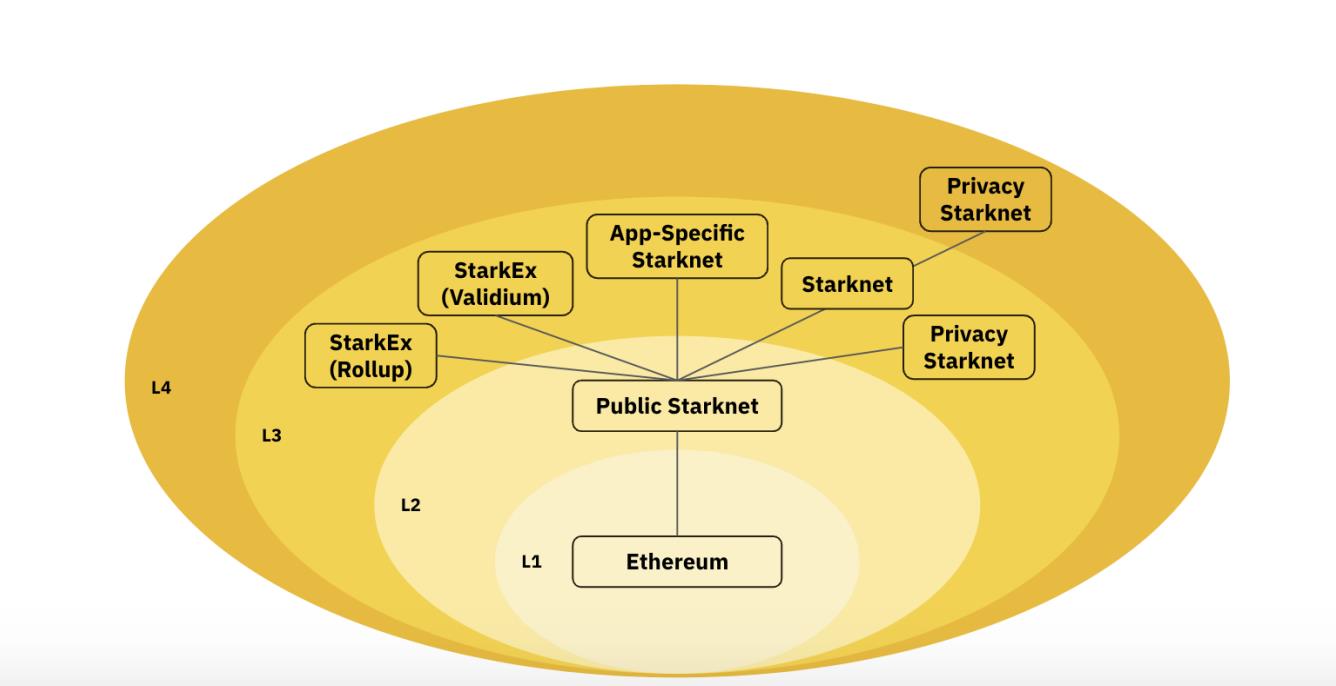
- Slush is developing an SDK for building zkVM L3 on Starknet.
- StarkWare has launched Recursive STARKs, a technology that enhances L2 scaling capabilities by allowing multiple transaction proofs to be bundled into a single proof.
- This technology relies on the Cairo programming language and SHARP, which supports aggregating transactions from multiple applications into a single STARK proof.
- StarkWare aims to optimize costs, latency, and computational resources to support the development of L3 solutions on the public Starknet network.
Key Player 5: Polygon 2.0
Background:
- Polygon's L2 solutions handle approximately 2-3 million transactions daily, with 300-400K continuously active addresses.
- Polygon has also launched its own app-chain solution, called Supernets, allowing developers to create custom app-chains.
Core of Polygon 2.0:
- Aims to unify Polygon's various platforms, providing users with a seamless interface.
- As a collection of ZK technology-driven L2 chains, Polygon 2.0 utilizes a unique cross-chain coordination protocol.
- The network can accommodate an unlimited number of chains, ensuring secure and instant cross-chain interactions.
Key Points:
- Interoperability: Polygon 2.0 aims to achieve smooth movement and interaction across multiple blockchains through ZK proofs.
- Security: By using zero-knowledge technology and existing PoS mechanisms, Polygon aims to enhance security and privacy.
- Scalability: The Polygon team is building Polygon 2.0 to support "effectively unlimited numbers of chains."
Latest Updates and Timeline:
- The Polygon PoS sidechain is currently protected by its own set of validators rather than through ZK proofs, but the vision for Polygon 2.0 is that each Polygon chain should be a ZK L2.
- The experience for users and developers will not change due to this transformation; Polygon PoS will continue to operate as usual, just with enhanced security due to the addition of ZK proofs.
- If the preliminary proposal receives support, the Polygon team expects to launch the zkEVM validium mainnet before the first quarter of 2024.

Conclusion: Given Polygon's performance on its PoS sidechain and the successful deployment of their zkEVM solution, this new vision holds considerable promise and may bring interesting enhancements to the broader L2 ecosystem.
Comprehensive Comparison of the L2 Market
- Characterized by its dynamism and competitiveness, each network brings its unique perspective, with significant differences despite commonalities.
Characteristics of Major Projects:
- Optimism: Distinguishes itself through its Superchain paper. It offers a fully open-source framework, but this may lead to other rollups using OP Stack diluting Optimism's liquidity and users.
- zkSync: Has some overlap with Optimism but differs in execution strategies from both Optimism and Arbitrum.
- Arbitrum: Provides a permissionless platform for creating L3 chains but still requires DAO approval for using Arbitrum's IP to develop L2s.
- Starknet: Adopts a multi-layer structure, using fractional scaling for L3s.
- Polygon: Chooses a more integrated model, bringing its L2 product suite together.
These L2 visions, while differing, all share a core focus on customization and application-specific chains.
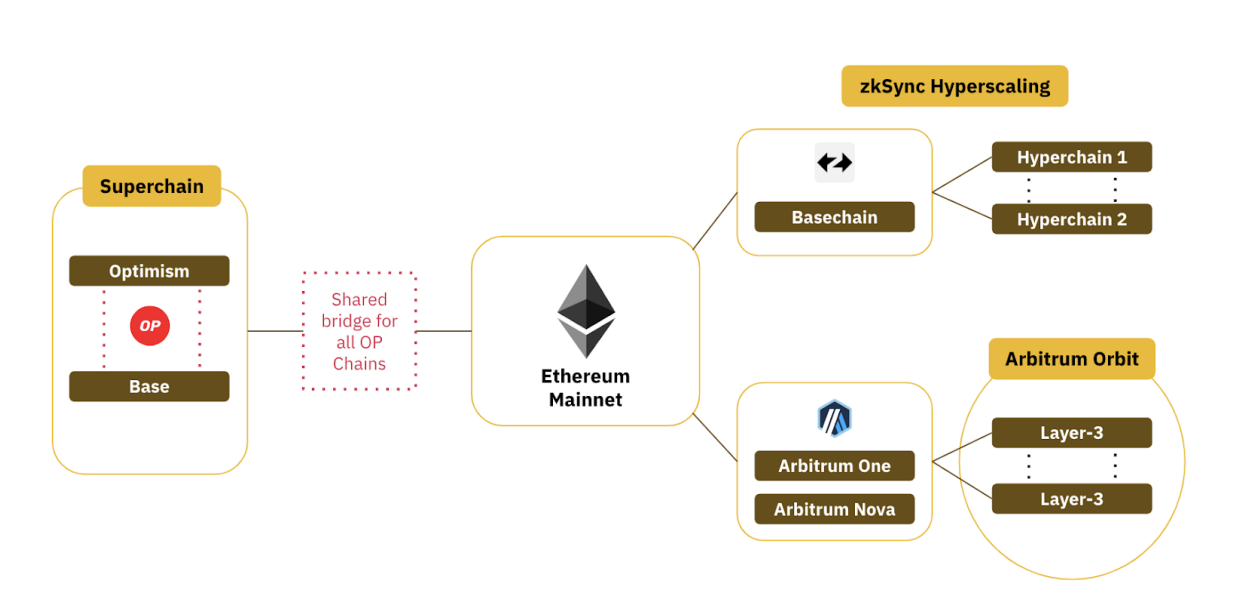
The nuances between different L2s can be illustrated in the following table:
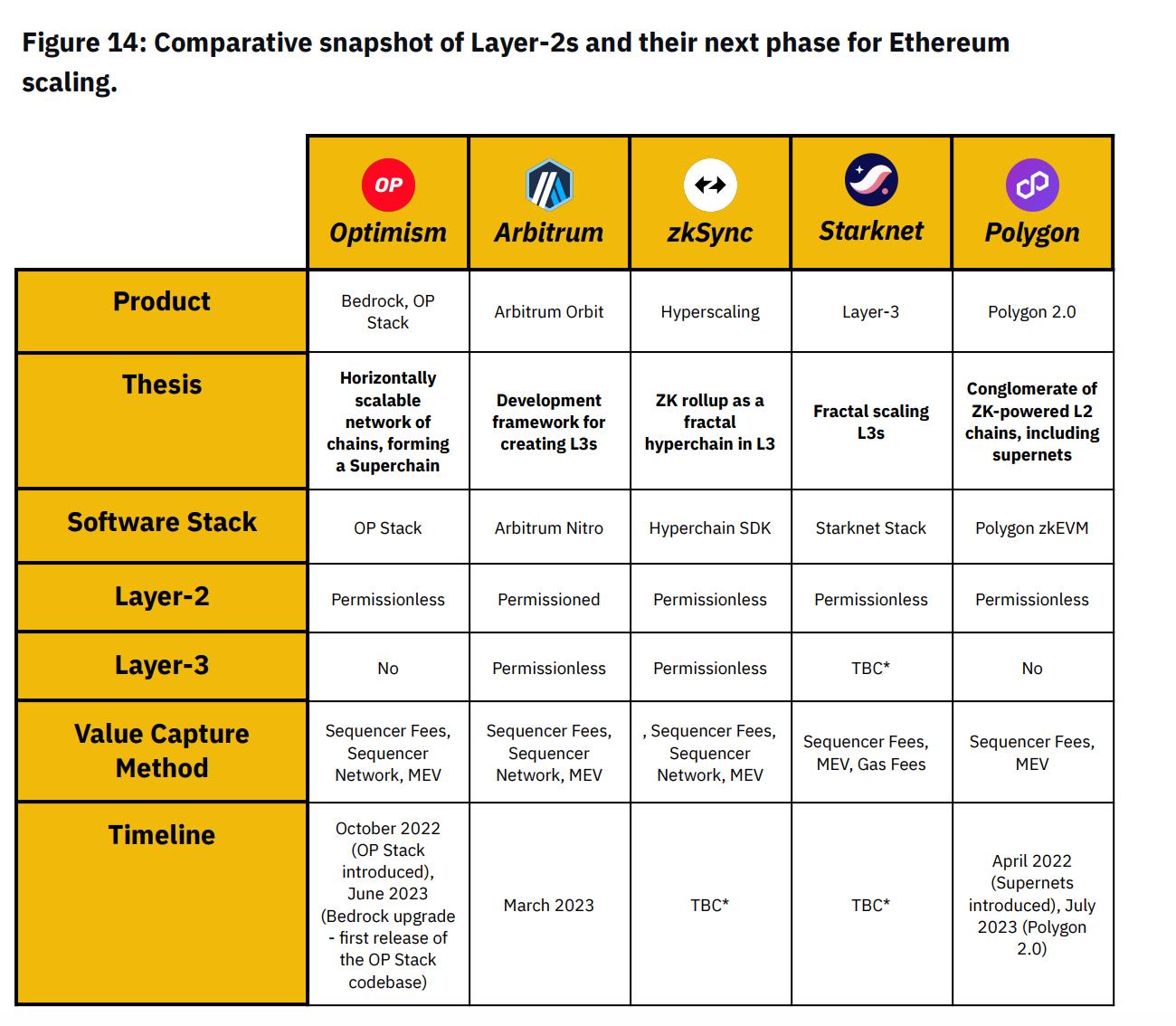
Ultimately, regardless of the similarities and differences in technical solutions, L2s also need to consider the following factors to determine how projects can accumulate value within their respective ecosystems.
- Customizability of Software: The ease of copying code and building on L2 will be a key differentiator. It is likely that projects built on L2 will seek specific modifications and may invest resources to fund these customizations. The best L2 software stack that can adapt to these situations will undoubtedly have a competitive advantage.
- Transaction Fees and Sequencers: Sequencers, which bear significant responsibilities for maintenance and cloud service costs, should be fairly compensated through transaction fees charged to users.
- Role of Governance Tokens: As the trend shifts towards decentralization, the functionality of L2 governance tokens becomes increasingly important. It is likely that most rollups will require token staking to be included in the shared sequencer network.
Concluding Thoughts
- The L2 ecosystem has made significant progress in enhancing the scalability, efficiency, and usability of the industry.
- The next phase of L2 evolution is being explored within the industry, leading to the emergence of various visions and approaches. Despite the many differing viewpoints, the common goal is to achieve infinite scalability, hoping that the world of Web3 can scale seamlessly like Web2.
- Currently, this field remains in its early stages, and specific methods and practices have yet to be fully determined.






